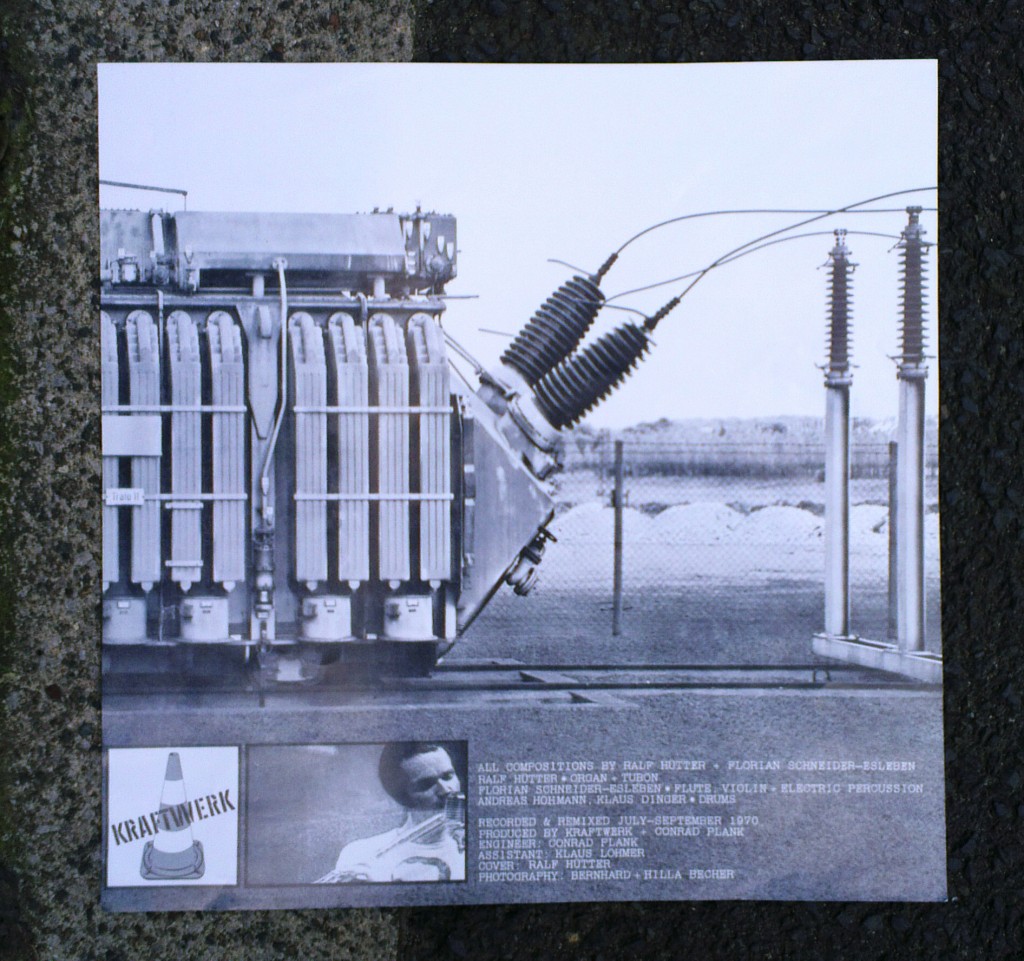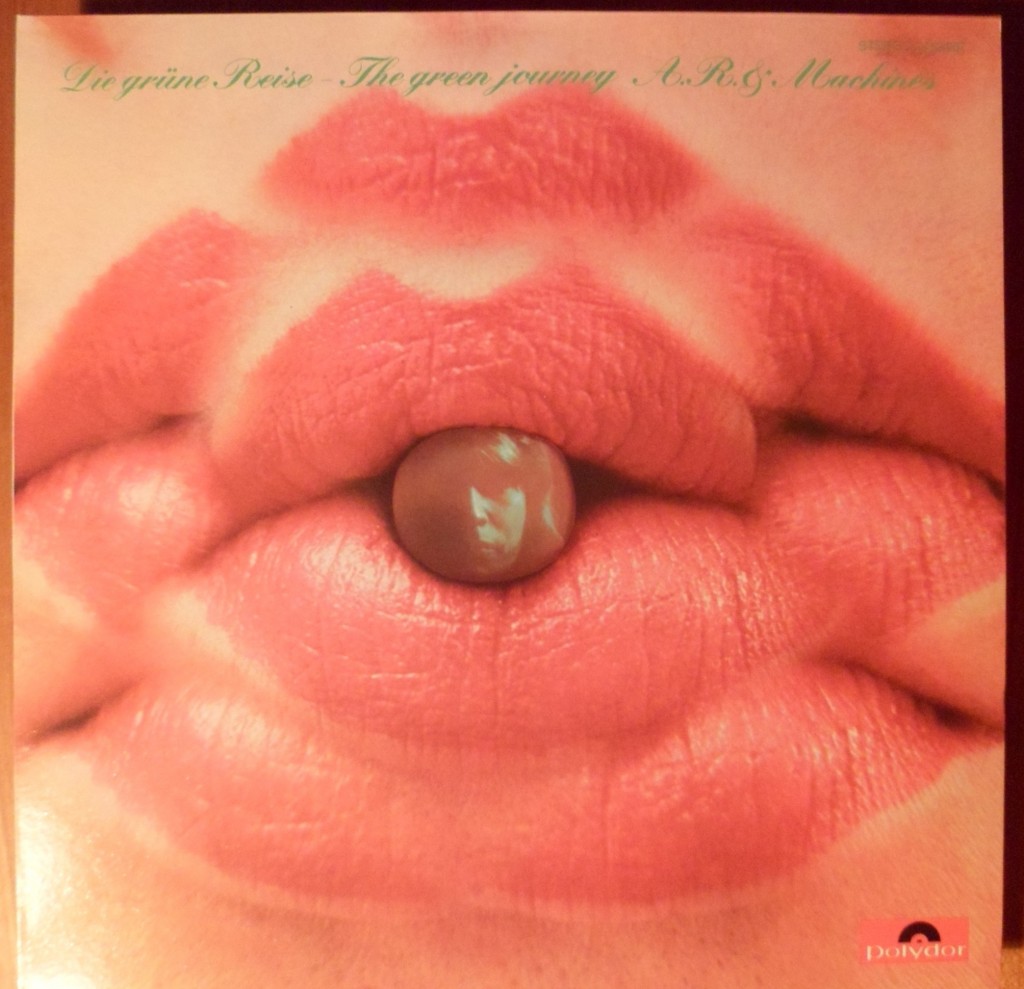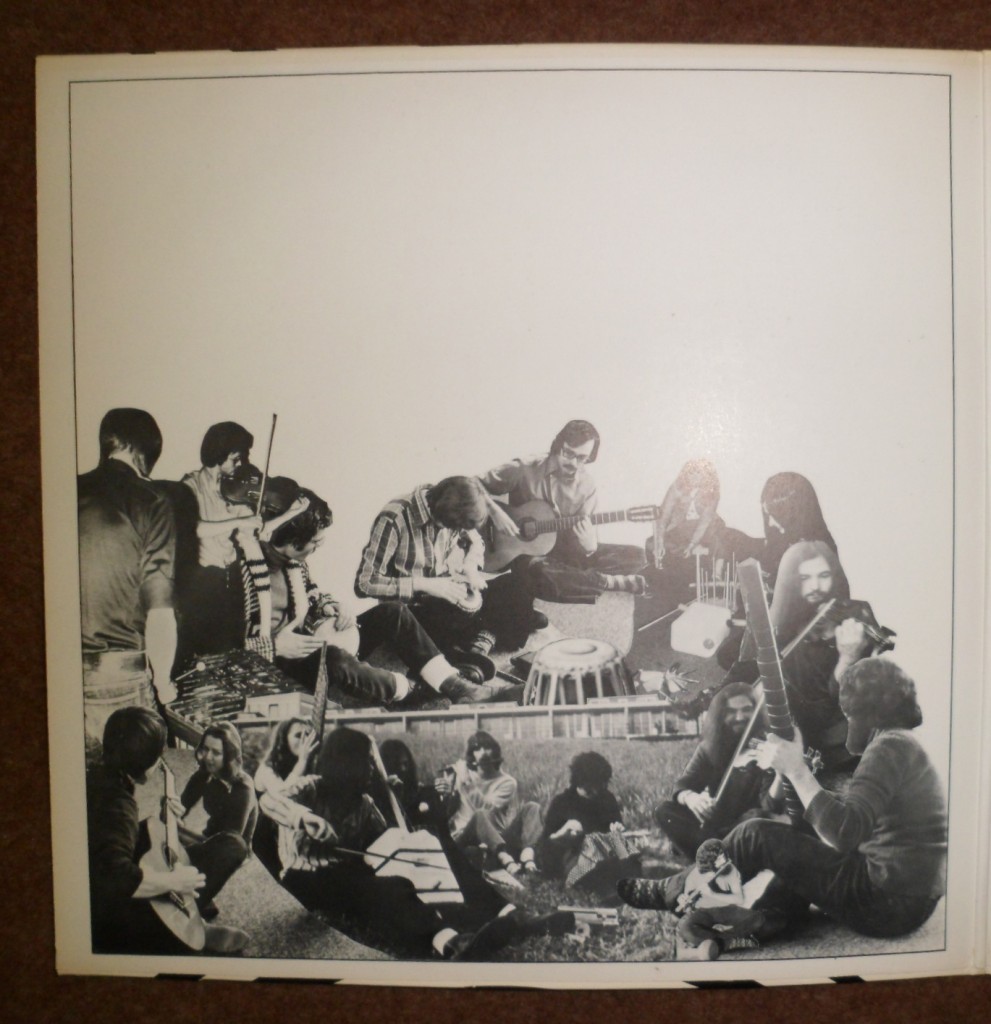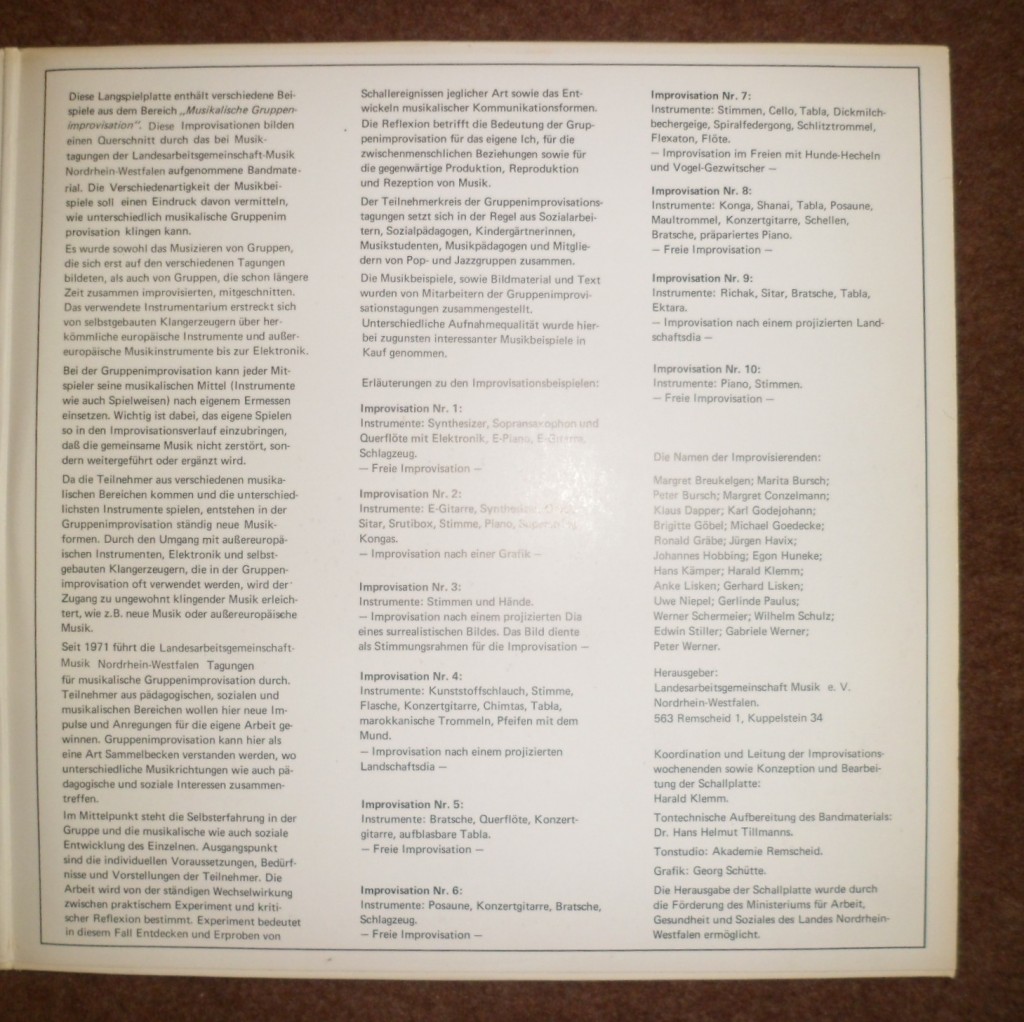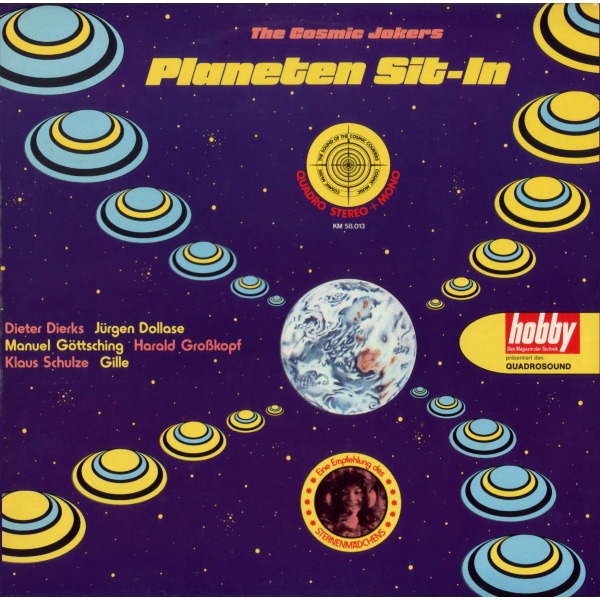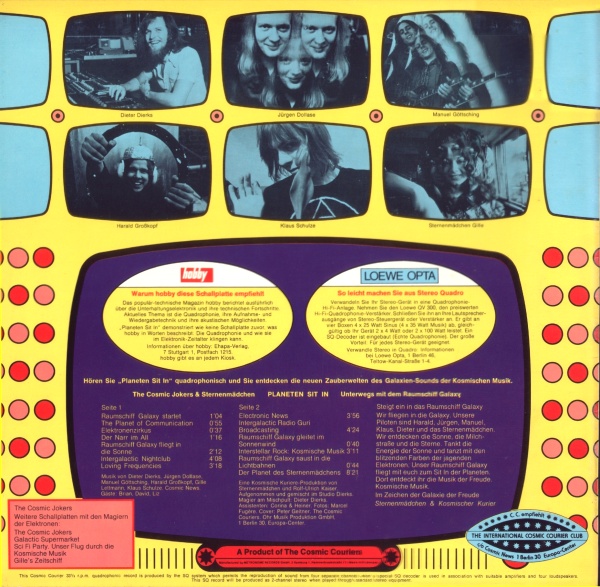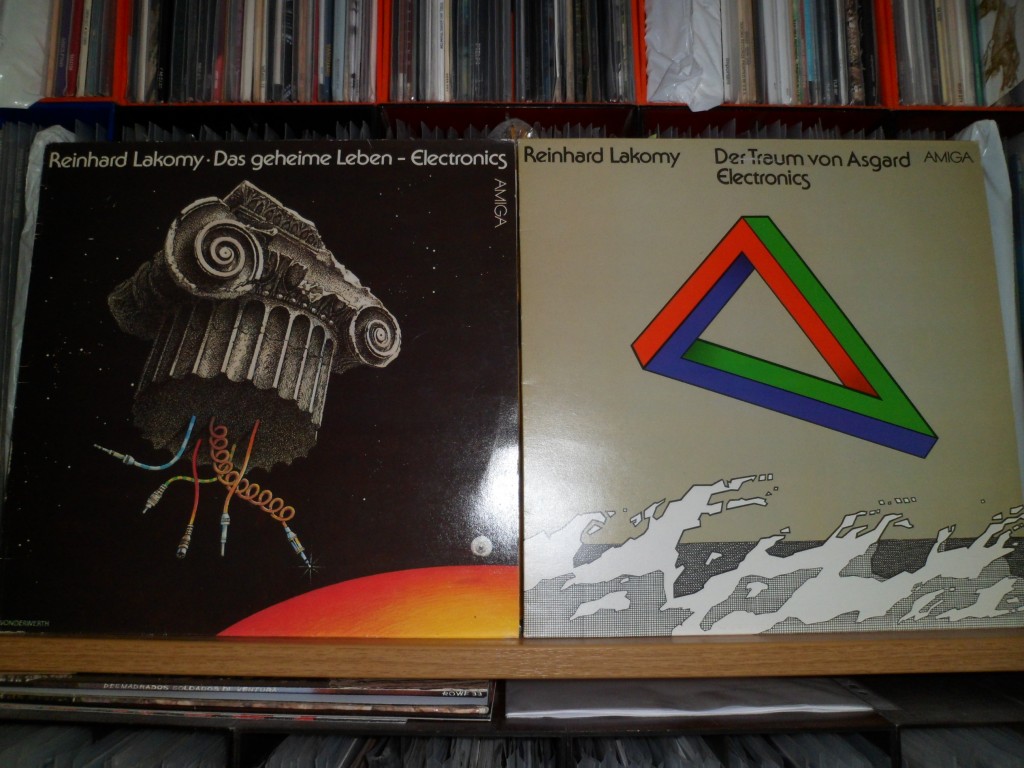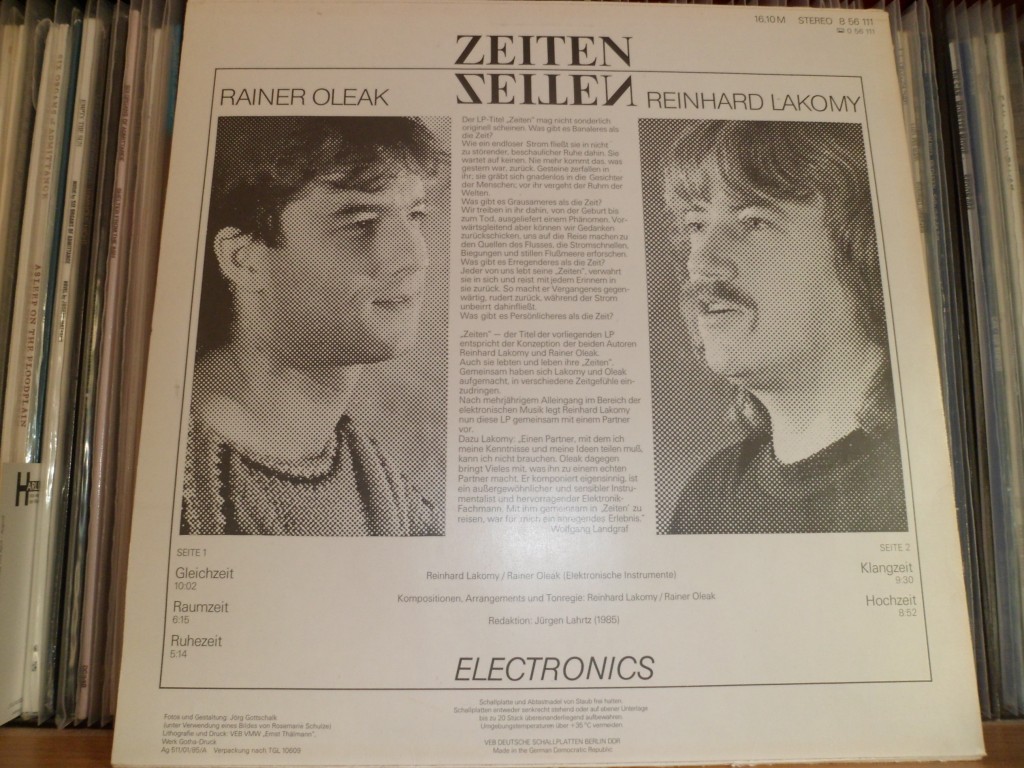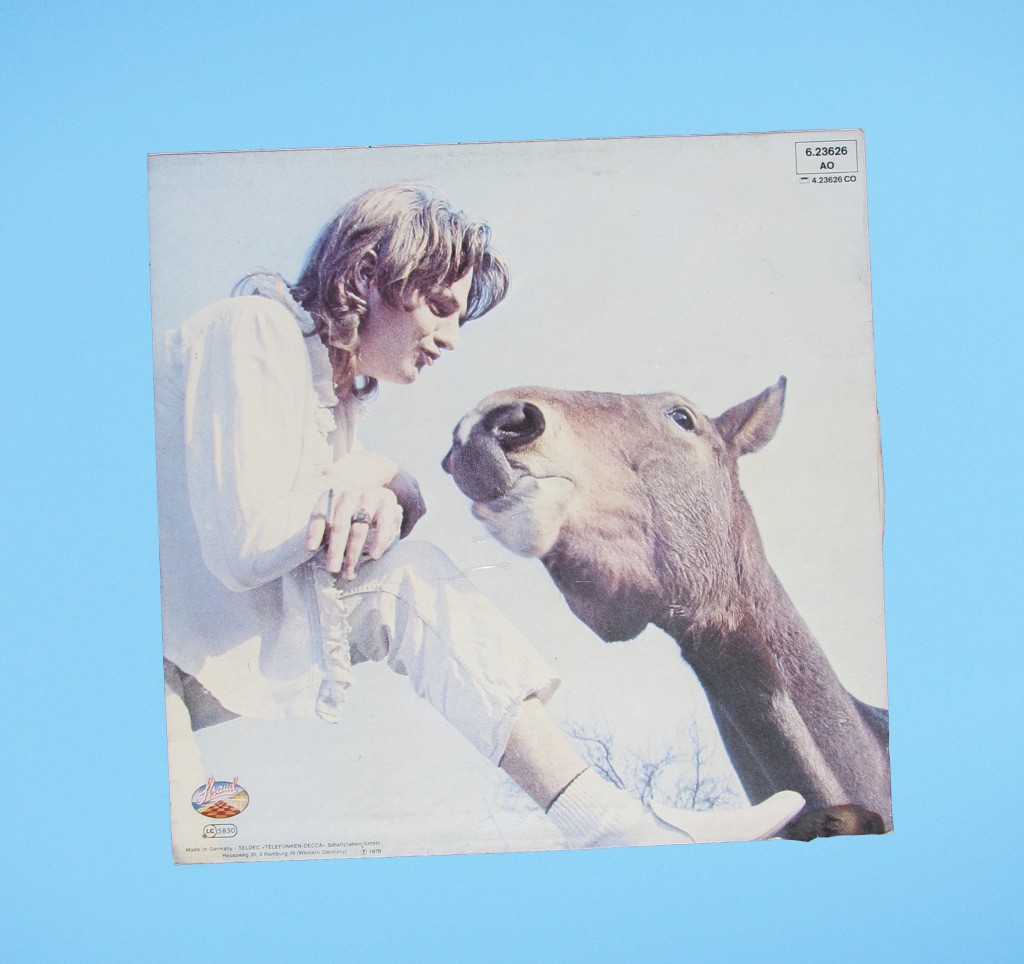
Can’s fourth studio album “Ege Bamyasi” was released in 1972. Their previous albums had been recorded in Schloss Nörvenich, a 14th century castle near Cologne. After having a hit single in Germany with “Spoon”, they moved into an old cinema (Inner Space Studio in Weilerswist) and recorded the rest of “Ege Bamyasi” there.
Their early albums, up to “Soon Over Babaluma” (1975), were recorded by bouncing between stereo recorders rather than using a multitrack. They would jam in the studio for hours, and then Holger Czukay would edit the tape into usable sections. This would then be played back and recorded onto another machine, whilst the band simultaneously played along to add another layer of instruments and vocals. The constrictions of this technique defined their music; without multitrack, they couldn’t mix or edit individual instruments after the event. Each layer had to be mixed as it happened. Later albums, such as the seventh album “Landed”, were recorded on conventional multitrack gear and sounded much more conventional – and boring.
The line-up for this album is the standard set of instrumentalists who lasted for all the classic Can albums – Holger Czukay (bass, engineering and editing), Michael Karoli (guitar), Jaki Leibezeit (drums), Irmin Schmidt (keyboards) – plus Damo Suzuki on vocals. Damo joined Can for their second album (“Soundtracks”) and stayed until their fifth album (“Future Days”). Damo’s singing is integrated into Can’s music; I find it hard to make out what he’s singing (or even what language he’s singing in, though it seems to be mostly English on this album) other than a few random words and phrases, but that doesn’t matter – what he does fits in perfectly. I’m not going to trot out the usual set of clichés about the band members, ‘cos you already know them… They revolve round “Stockhausen-trained / more mechanical than a drum machine / Damo was asked to join Can after they heard him busking in the street”. There you go; I’ve trotted them out after all.
The artwork shows a can of okra shoots – “Ege Bamyasi” apparently means “Aegean okra” in Turkish. There’s a large Turkish population in Germany; mass migration started in 1961 after the building of the Berlin Wall caused a labour crisis in West Germany.
The first thing you notice about the album is the unusual recorded sound – dry, dead, close-up. The rhythms are funky, but the sound quality makes it a desiccated, listless funk. It’s one of those albums that have a consistent sound all the way through – and it’s not the same as the sound of any other Can album. Most of the pieces sound like they’ve started off as improvisations, though at least two have a defined song structure to them.
Pinch
The album starts with an abrupt fade-up into an improvisation, with Damo muttering and wittering on about God-knows-what. The piece is dominated by drums, percussion and bass – the guitar and keyboards play lesser roles in the background. The “chorus” features a strange whooping sound – feedback? Swanee whistle? Who knows? Schmidt’s karate-chop organ playing becomes prominent towards the end of the piece. This is one of the more formless pieces on the album, which makes it an interesting choice as the opener – though it certainly defines the “Ege Bamyasi” sound.
Sing Swan Song
Begins with the sound of water, and then the song starts – and it is a song, with a structure and a chord sequence. Damo singing delicately over arpeggio guitar, with a fuzz guitar wailing in the distance. Lovely. The lyrics are abstract and absurd – “Shaking her cold hand to hear you’ve been just the drunky hot bowls.” There is something about the lazy, shimmering sound of this piece that reminds me of Pink Floyd, particularly the songs on the second side of “Atom Heart Mother”.
One More Night
A driving, funky track. Drums and bass right up front, very little reverb on them. The singing, a whispered repetitive chant, merges into the music. This is great.
Vitamin C
A wonderful song, really catchy, with hook lines. “She is stepping on the pigman’s head”- I’m not sure if the transcription of the lyrics (that I found on the internet) is accurate or not, it’s difficult to say. One of Can’s best songs, and one of Damo’s best performances. The track ends with a flock of electronic birds, who fly into the next piece:
Soup
I hate this song. Hate it? I fear it. Ten and half minutes of abstract collaging. After the initial ambient sounds, you hear a band dragging their way through a dreary, listless song in another room. Then a big, noisy, shouty song bursts into life – I’m reminded of Faust. This is rock, not funk. It eventually peters out into some electronic bleeps (more karate-chop organ) and a speeding-up drum pattern. After a time, this stops. Now there’s a musique concrète section of overloaded electronic blasts and someone declaiming loudly in the style of Kurt Schwitters’s “Ursonate” sound poetry. This section reminds me a lot of Frank Zappa’s noisy abstractions (“Lumpy Gravy” and “Uncle Meat”) – in fact, the whole piece is somewhat Zappa-like, and a bit like “The Faust Tapes” too, although Zappa and Faust use abrupt jump-cut editing, whereas the sections of this song just die away. The track ends with some free-jazz nonsense and more Schwitters-style shouting.
I’m So Green
Light guitar/drums funk song. Three minutes of pleasantness. Not much more to say.
Spoon
“Ege Bamyasi” ends with the song that financed the album. “Spoon” was used as the theme of a German TV thriller series called “Das Messer” (The Knife), and subsequently released as a single. It reached No.6 in the German charts and sold 300,000 copies. The money from this enabled them to move into Inner Space Studios and record “Ege Bamyasi”. “Spoon” was patently not recorded at Inner Space; it has a different sound and feel to the rest of the album. It starts with a clattering drum machine and twiddly organ, and then the singing begins along with a pulsing sound (something through a Leslie cabinet). This is a proper song, not based on an improvisation. It’s arranged and constructed like a single (albeit a Can single) – different sections, hooks, lots of guitars, harmony vocals (!). Again, I am faintly reminded of Pink Floyd in places.
What else to say? Can were one of the best Krautrock bands. “Ege Bamyasi” is one of their best albums. If you’ve not got it already, why not?
review by Colin Robinson



